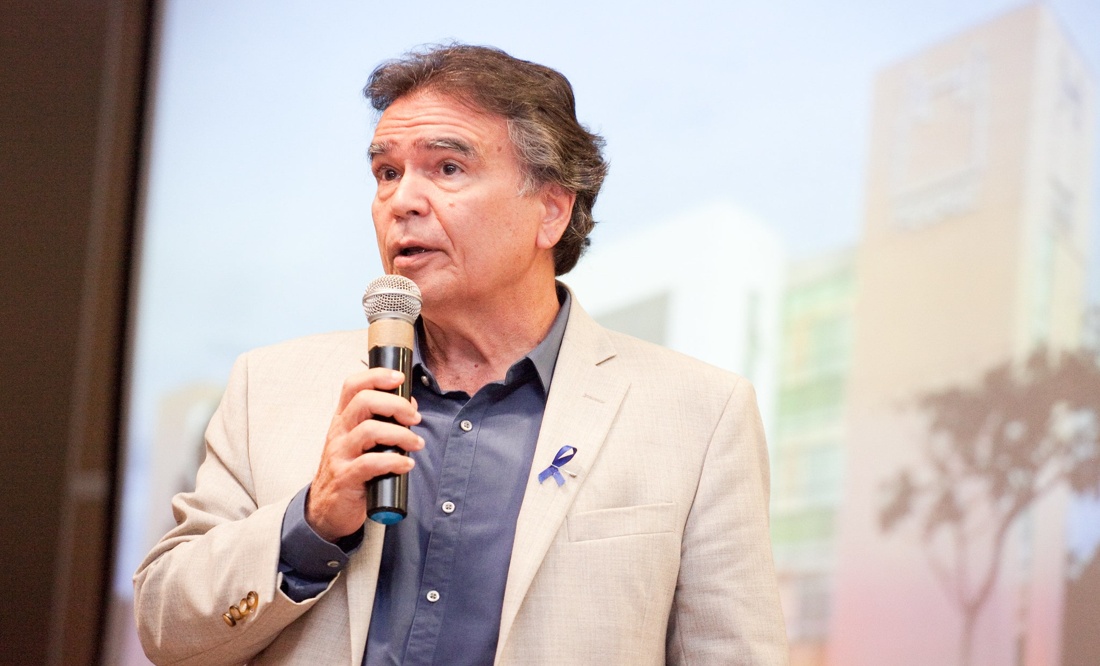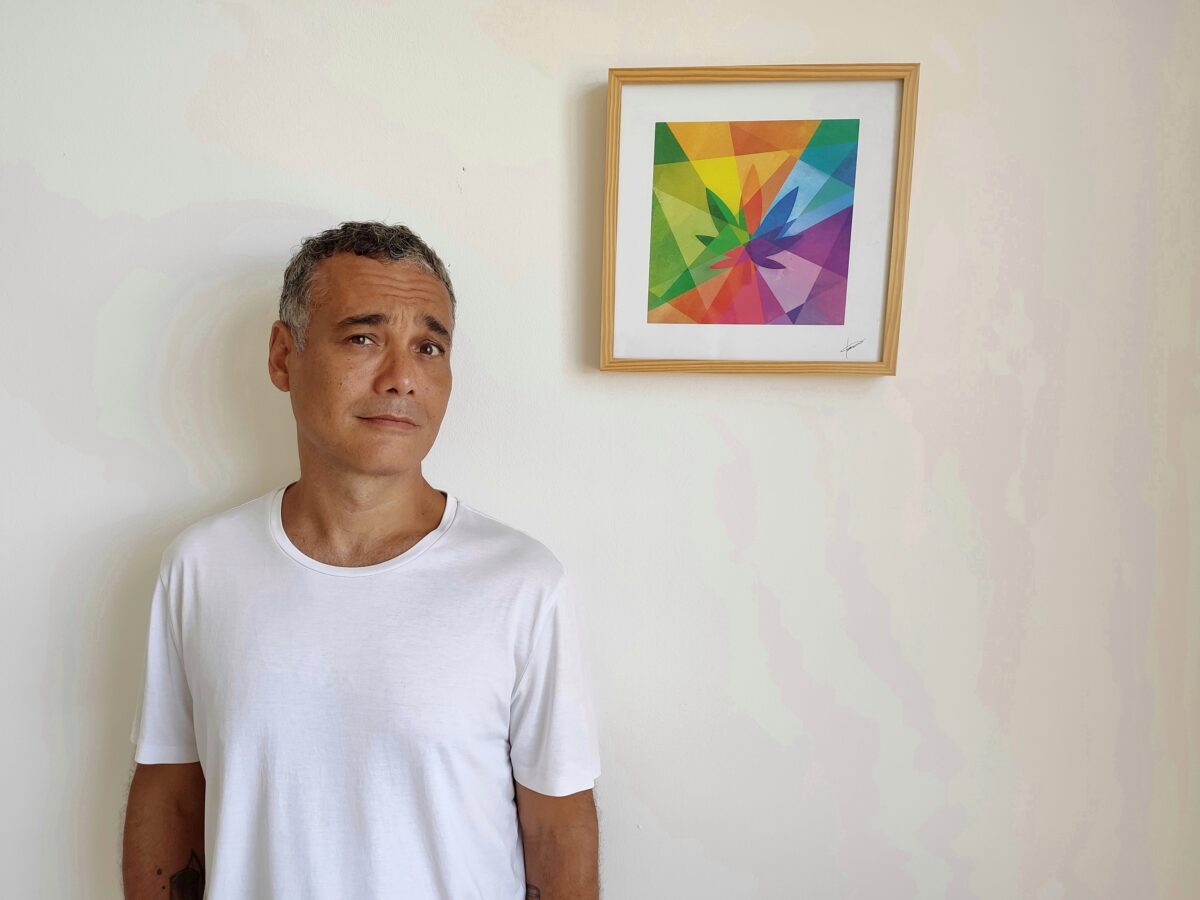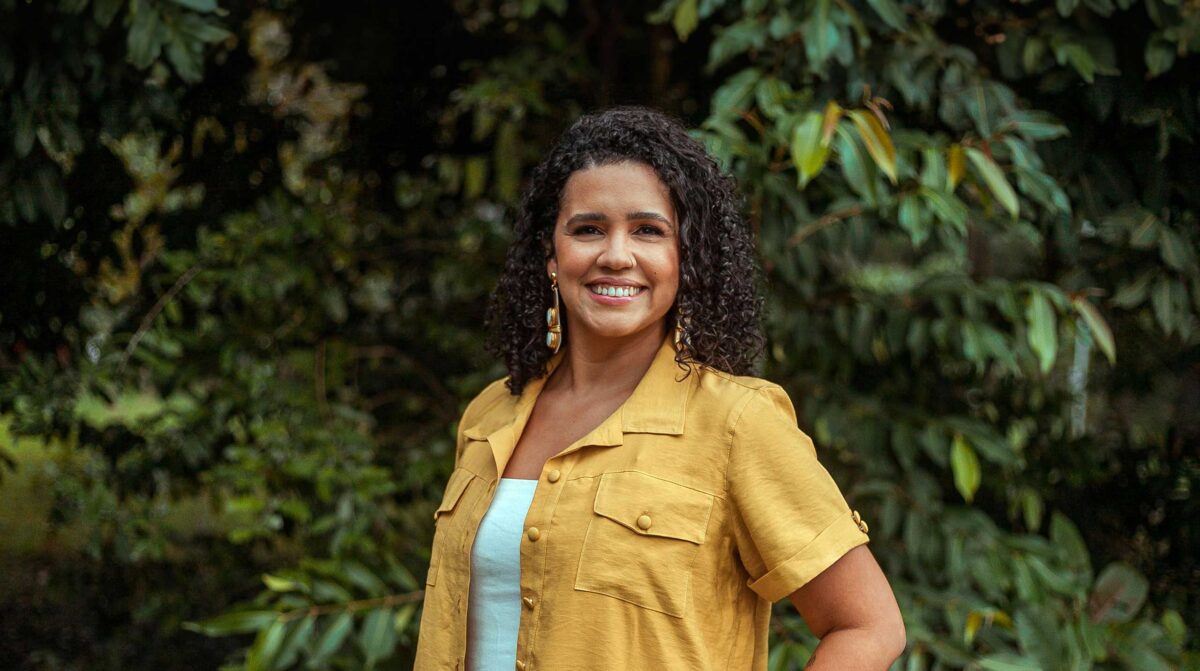 #Interviews
#Interviews
Sidarta Ribeiro: “Psychedelics could revolutionize medical practice”
Neuroscientist explains why this field of research holds promise in mental health, neurology, and knowledge exchange with Indigenous peoples
 "The biomedical psychedelic research area is growing fast, but is still relatively small," says neuroscientist Sidarta Ribeiro | Photo: Luiza Mugnol
"The biomedical psychedelic research area is growing fast, but is still relatively small," says neuroscientist Sidarta Ribeiro | Photo: Luiza Mugnol
“The idea that mental health is manageable by substances, regardless of the context, is a misconception.” This statement comes from neuroscientist Sidarta Ribeiro, standing professor and cofounder of the Brain Institute at the Federal University of Rio Grande do Norte (UFRN).
Considered a key exponent of the so-called “psychedelic rebirth” (the resumption of scientific studies into medicinal use of psychedelic substances), Sidarta Ribeiro advocates that the new wave of research projects on this line constitutes “a scientific revolution with potential for also becoming a clinical revolution.”
Having obtained his PhD at The Rockefeller University, with a postdoctoral placement at Duke, both in the United States, Ribeiro has published articles in noteworthy scientific journals such as Nature Mental Health and PLoS Mental Health, as well as the digital magazine Sumaúma. These works focus on psychedelic science and the therapeutic use of substances traditionally used by Indigenous cultures.
His research covers a range of areas including sleep, dreams, memory, learning, animal behavior, neuronal plasticity, computational psychiatry, cannabis, and psychedelics.
In addition to his scientific accomplishments, Ribeiro gained renown as an author after publication of O oráculo da noite (The Oracle of Night) (2019), which looks at the history and science of dreams. His most recent book, As flores do bem (The flowers of good) (2023), addresses the history and science of cannabis, combining his role as a scientist with that of a multiplier and thinker in scientific evolution.
In an interview with Science Arena, the researcher discusses the evolution of psychedelic science and its therapeutic applications, addressing crucial questions that arise as these insights and practices advance, considering the impacts for researchers, healthcare professionals, regulators, and society as a whole.
Science Arena – What is the current outlook on psychedelic science and its applications in the mental health area?
Sidarta Ribeiro – It’s important to remember that the so-called “psychedelic rebirth,” which started about two decades ago, is, in fact, the third wave. The first has been ongoing for thousands of years, and involves all the discoveries, inventions, and cultural constructions around psychedelic substances by Indigenous peoples—including, for example, peyote in Mexico, ayahuasca in South America, and other substances in Africa and Asia.
The second wave occurred between the 1950s and 1970s in urban environments, with science involved, and documented several interesting aspects until it was interrupted by the “war on drugs.”
The third wave began to gain ground in the first decade of this century, when research pathways opened by the second wave were resumed, with the assistance of more powerful methodologies, more advanced technology, and more robust statistics. Today, the third wave constitutes a scientific revolution with the potential of also becoming a clinical one.
How does Brazil fit into this third wave scenario?
The biomedical psychedelic research field is growing fast, but is still relatively small. Brazil was one of the few countries that started riding the third wave when it was just beginning. Currently, at least 10 independent groups are conducting relevant research in the area, and we are at the forefront of knowledge production on certain substances, such as ayahuasca, which, as well as being used by several Brazilian Indigenous peoples, is cleared for religious use in the country, which incentivizes and facilitates the research.
Which substances and their clinical applications stand out in the research results?
The complex substances used by Amerindian peoples in the form of natural products, such as peyote, ayahuasca, and “magic” mushrooms (which respectively contain the psychedelics mescaline, N,N-Dimethyltryptamine [DMT], and psilocybin), have been validated by academic research for their medicinal properties.
Synthetic substances discovered in laboratory settings in the twentieth century, such as LSD, are also validated. These are the so-called “classic psychedelics”—tryptamines and phenylethylamines.
Other psychedelic substances, such as ibogaine, discovered and used by African first-nation peoples, and MDMA and ketamine, synthesized in the laboratory, also have valuable properties for mental healthcare. Psychedelic-assisted psychotherapy shows much promise for a number of clinical conditions, including extreme cases of trauma, desperation and imminent suicide, depression, treatment of addictions, and improved quality of life for patients under palliative care.
Is there a fundamental property of psychedelics that stands out for its therapeutic potential?
Yes. Psychedelics produce neural plasticity of a particular type—known as metaplasticity—which tends to be more balanced, more homeostatic than the plasticity produced by other substances that induce this type of neurophysiological process.
This can help considerably in conditions involving memory rumination and addictive behaviors, such as in persistent trauma, mood swings, and addictions.
In respect of application to medicine, this metaplasticity production is also promising for neurological treatments for repair, regeneration, and maintenance of neural tissue health.
Why are psychedelic experiences important?
There are two key points here. The first and most basic is understanding the importance of the setting; the environmental and relational context in which the experiences and therapeutic process occur. This understanding, strongly conveyed through knowledge about psychedelics, also goes for other substances.
For example, experimental results show that the antidepressive medication fluoxetine tends to have the opposite effect, aggravating depression when the setting is hostile or adverse, and we can assume that this applies to a considerable portion of the Brazilian and global population.
So, the idea that mental health is manageable by substances regardless of the context is a misconception. The people and cultures that discovered psychedelics and knew how to use them as a powerful healing resource teach that the interaction of these substances with the setting is a fundamental aspect of their action.
What about the psychedelic experience itself?
What both Indigenous knowledge systems and a considerable number of non-Indigenous people and communities that use psychedelics in different ways—such as medicine, religious sacrament, or a tool for exploring different levels of awareness—tell us is that they provide adventures, and subjective, inner odysseys, fundamental to these processes.

Psychedelic experiences are related to belief systems and the conscious processes undergone by people during and after the effects of the substances. The research outcomes confirm this.
A well-managed psychedelic experience can bring long-term beneficial effects. Thus, therapeutic protocols that include psychedelic experiences do not mandate continual use of the substance, but merely a few sessions combined with psychotherapy.
I believe that as it evolves, the research will demonstrate, with increasing clarity, that the attempt to reduce psychedelics to yet another type of pill not producing any significant introspective or otherness experience leads to a reduction in the potential of these substances.
Is this related to the difficulties in obtaining approval of some of these therapy protocols by regulators such as the Food and Drug Administration (FDA), which governs the use of foods and medications in the United States?
Yes. First and foremost, we must remember that the actual psychedelic rebirth started a short time ago after decades of research invalidation under the “war on drugs” banner. Prejudices against substances which, regrettably, were associated with crime and exaggerated or invented risks, are still widespread.
As with any substance, psychedelics have their risk groups and contraindications, and require knowledge and caution for use with patients; many people can safely use them, however.
In addition to overcoming these prejudices, the challenges for regulators such as the FDA and Brazilian Health Surveillance Agency (ANVISA) have to do with the fact that approval of psychedelic-assisted therapies does not just require safety and efficacy analysis for the medical use of a key ingredient.
As well as the substance itself, each therapeutic model submitted to these agencies has to be assessed. But what may seem like excessive complexity today, may in the future prove to be a necessary step for a fuller, deeper understanding of mental health and ways to promote it.
There’s also the question of “unmasking” the placebo in clinical trials, right?
In the case of psychedelics, it’s easy for clinical trial participants to know when they are taking the substance or a placebo. This also demands a slightly different perspective in evaluating results, and that type of development may be met with resistance by conservative regulatory structures.
You defend the valuing of knowledge systems and recognition of the rights of Indigenous peoples across the various aspects of the psychedelic rebirth. Can you explain what this means?
We need to capitalize on the Nagoya Protocol to ensure fair benefit sharing. Moreover, it’s time to acknowledge that we are in trouble, needing the help of men and women who carry different knowledge and wisdom to ours.
We need to open our eyes and realize that we have a lot to learn from other peoples, cultures, and human experiences, particularly when dealing with medicines that they have presented to us, together with the knowledge systems accumulated and honed over thousands of years.
Evolution of studies into psychedelics requires a mutual process of knowledge sharing, in which we can make the healing experience collective.
Failing to understand this, besides constituting predatory appropriation, would be crass ignorance and a waste of the opportunities that we need to wake up to and take advantage of intelligently and fairly. We are in a good position to do so. But we need to do it, and more.
By way of example, as stated by psychiatrist and professor Ricardo Moebus [of the Federal University of Ouro Preto, in Minas Gerais State], among the integrated therapies accepted by the Brazilian National Health System (SUS), there is great diversity of practices coming out of other countries and continents, such as acupuncture, Reiki, and homeopathy, but there is still no quilombola (maroon community) or Indigenous input.
*
This article may be republished online under the CC-BY-NC-ND Creative Commons license.
The text must not be edited and the author(s) and source (Science Arena) must be credited.


